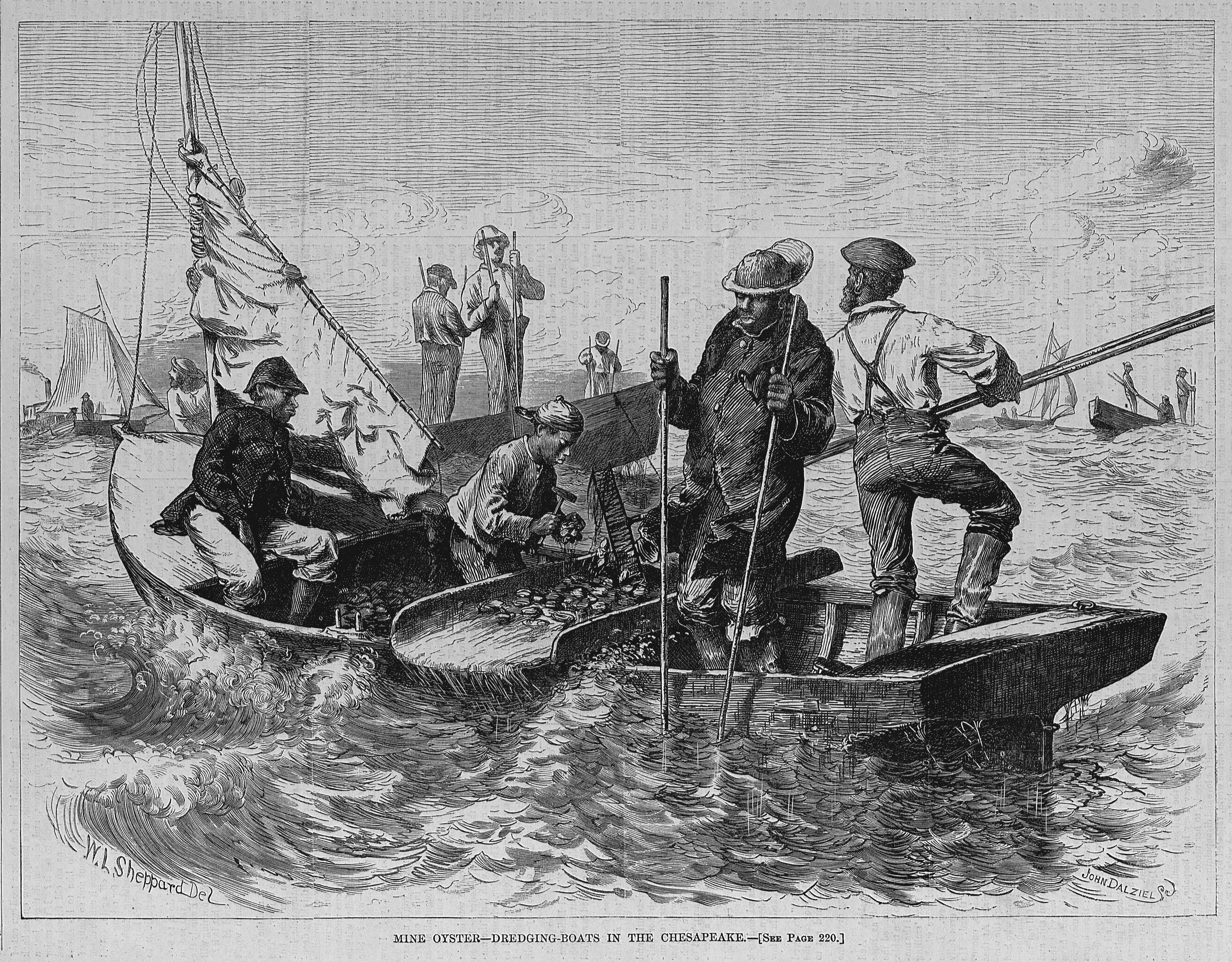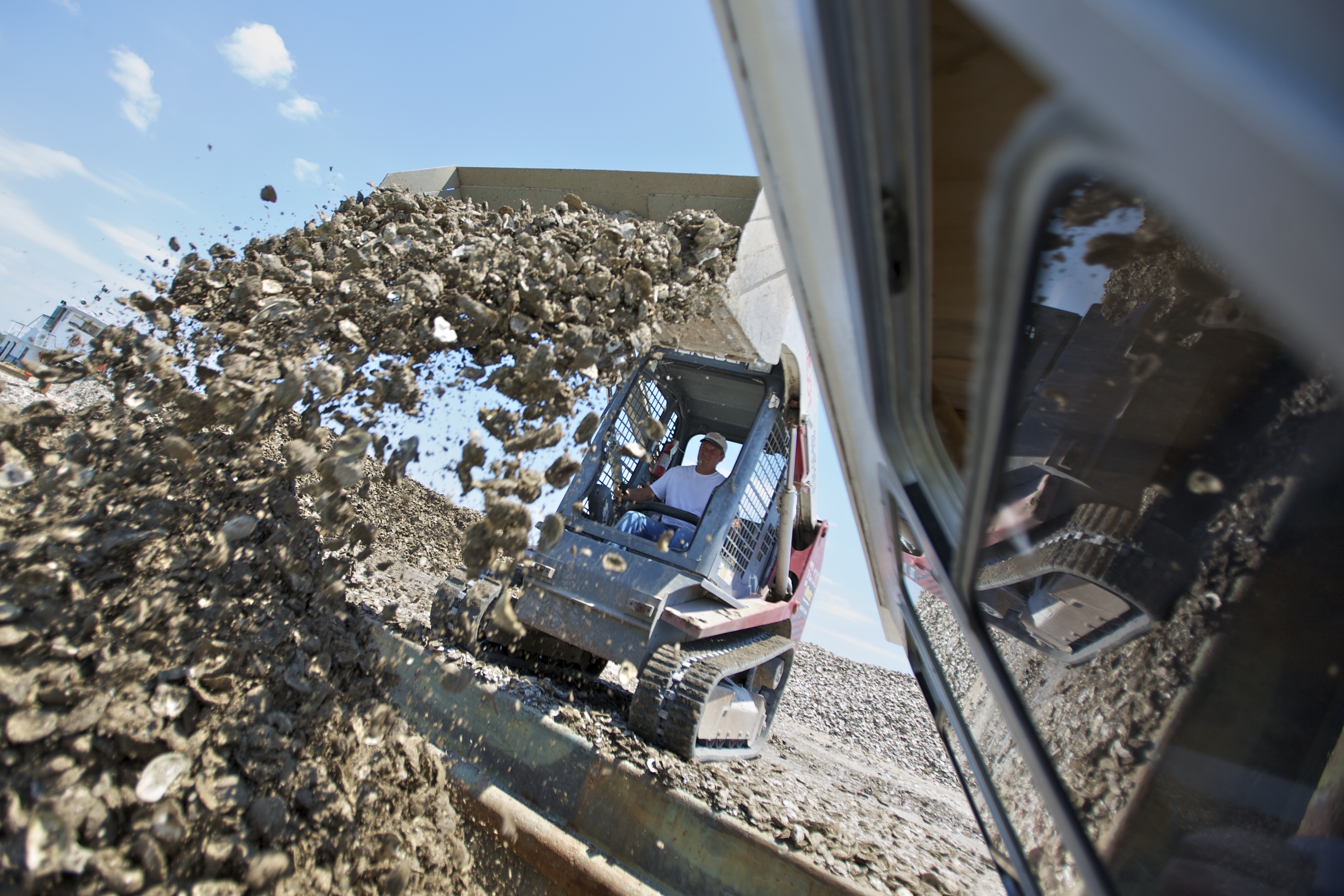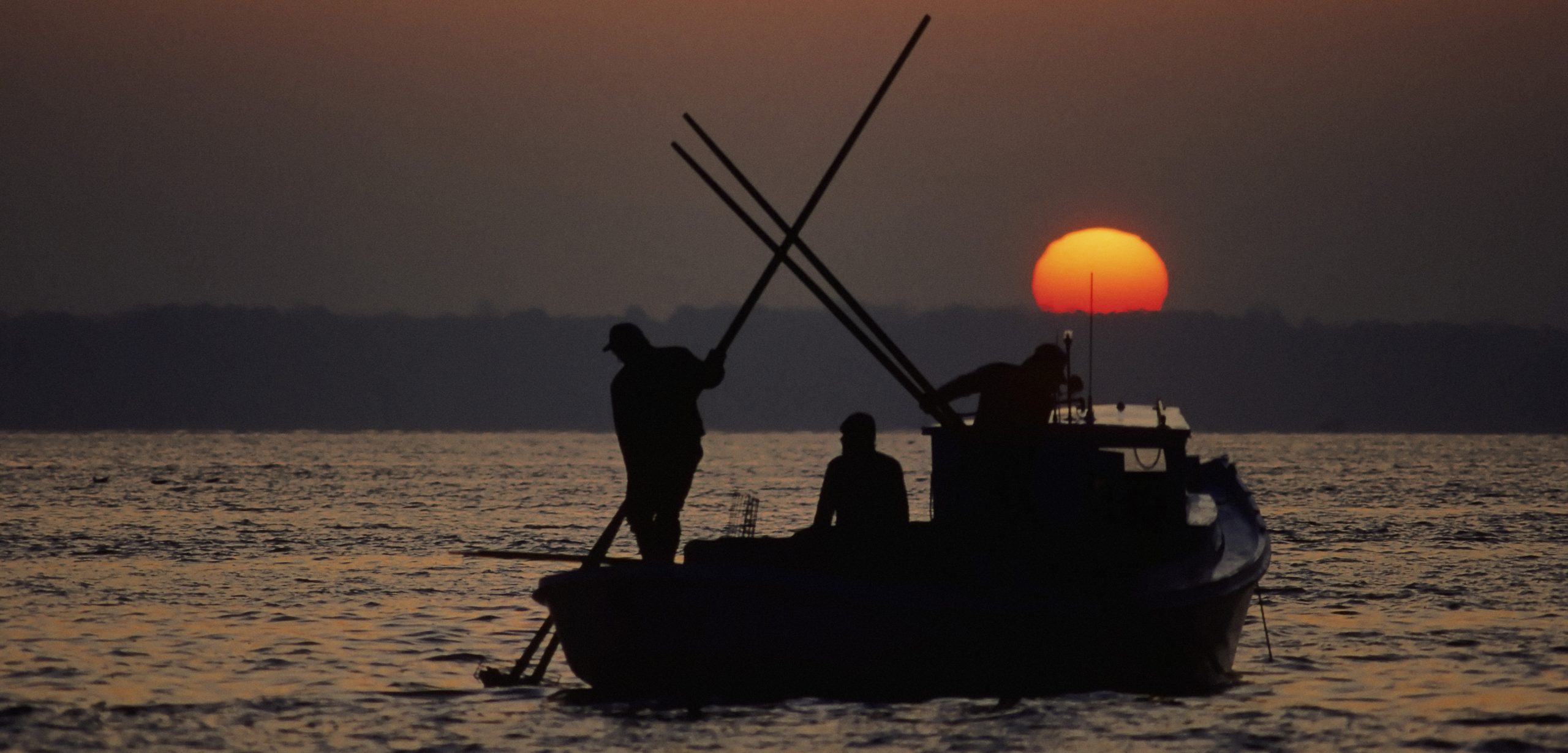Mud, Shuck, and Spat
The future of Chesapeake Bay’s oysters depends on interstate cooperation.
Article body copy
“No one has killed anyone since 1958,” says Martin Gary, head of the Potomac River Fisheries Commission, looking out at a roomful of fishermen, aquaculturists, conservationists, and oyster managers. It’s a hell of a way to open a management meeting, but when it comes to the Chesapeake Bay oyster fishery, it’s an apt way to summarize the industry’s tumultuous, and sometimes violent, history.
In the 1950s, Chesapeake Bay endured a protracted Oyster War, which came to a head in 1959 (not 1958), when police gunned down an oyster fisherman named Berkeley Muse from Colonial Beach, Virginia, for illegally dredging oysters. Muse’s death, writes historian John Wennersten, came just as Virginia and Maryland put an end to the fighting with the Compact of 1958, legislation that split Chesapeake Bay oyster management between the two states. The compact also created the Potomac River Fisheries Commission, which presides over the once oyster-rich river that divides the two states. The legislation laid the groundwork for the collaborative, yet fiercely territorial, oyster management regime that exists today.
But just because the killings have dropped off in the past 57 years doesn’t mean tensions in the oyster fishing community have waned.
In February, more than 100 stakeholders gathered for the Chesapeake Bay Oyster Summit in Fredericksburg, Virginia, to share their knowledge, experiences, and frustrations. (Notably underrepresented were oyster fishermen, an absence explained by the unusually warm and clear day—when weather permits, fishermen cannot afford not to fish.) Under discussion: the future of Chesapeake Bay’s oysters.
In the 1880s, Chesapeake Bay oystermen were hauling in 20 million bushels of oysters, according to Mark Luckenbach, a marine ecologist at the Virginia Institute of Marine Science. After a perfect storm of overfishing, environmental changes, and the rise of infectious diseases, oyster fishermen in the 1990s were getting less than one million bushels. Today, Chesapeake’s oysters retain maybe one percent of their former abundance.

Fishing for oysters on dredging boats in Chesapeake Bay. Wood engraving on paper by William Ludwell Sheppard, 1872. Photo by Corbis
Oysters are delicious. They are also essential to the health of the bay’s ecosystem. Fishermen and oyster farmers, as well as conservationists and government agencies, are working to restore Chesapeake Bay’s oysters to a semblance of their former glory. It’s been a hard-fought battle. Not least because the various groups can’t seem to agree on exactly what needs to happen. Different priorities beget different strategies. Everyone wants the oysters back, but the questions of how and why are the sources of modern conflict.
For years, restoration efforts in the bay involved laying a thin veneer of recycled shells on the seafloor, under the assumption that new oysters would settle on top. These projects largely failed as settling sediment buried the beds.
More modern attempts have involved engineering large three-dimensional structures, but this complex topology requires additional building materials—more oyster shells. Talk about a catch-22.
The result of the demand for oyster shells is that there is now a shell shortage, says Jim Wesson of the Virginia Marine Resources Commission. When the states started buying oyster shells in 2006, originally for US $0.50 a bushel and now up to $3.00, shucking houses began hoarding their supplies, hoping for even larger returns.

In the Gulf of Mexico, off Alabama, workers pile up oyster shells in a bid to help restore oyster reefs. Photo by Meggan Haller/Keyhole Photo/Corbis
The shortage has made conservationists cast their nets wide, desperate for viable alternatives. They’ve tried dredging ancient oyster middens and seeding the seafloor with fossil oysters pulled from quarries. They’ve proposed importing oyster shells from Mexico. Others are ready to give up on oyster shells and are exploring alternate (often inferior) substrates, such as concrete, slag, granite, and geotextiles.
The lines have been drawn between fishermen, aquaculturists, and conservationists. But, much like in the 1950s and before, the deepest divide is between Virginia and Maryland. The two states are taking wildly different approaches to oyster management. Maryland relies on publicly funded hatcheries to provide seed stock (larval oysters that have yet to settle), public fishing grounds, lease plots, and aquaculture facilities. In Virginia, hatcheries are private businesses; the state’s only public hatchery, at the Virginia Institute of Marine Science, provides oyster stock solely for research.
Virginia has focused on establishing protected areas where oyster fishing is forbidden and on rotational regions, which act as temporary refuges and allow harvest only rarely. Maryland, by contrast, relies on private ventures to regulate themselves, trusting that the commercial needs of the industry will lead to investments in greater habitat restoration.
Throughout the tense two-day oyster summit, the specter of the old Oyster Wars loomed. As the conversations and debates went on, it became obvious that the community realizes that, for their industry to survive, everyone needs to work together. Much like an oyster reef, the Chesapeake Bay oyster community is built layer by layer—it is jagged, tough, defensive, and yet surprisingly cohesive.

